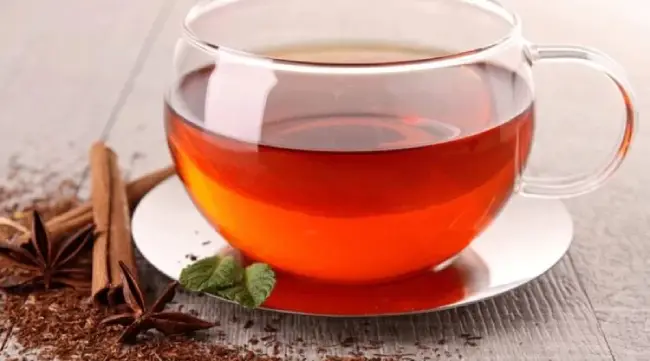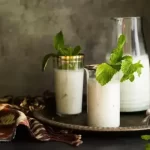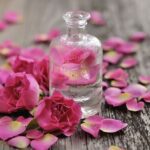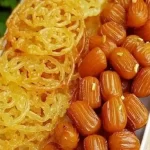Among all the teas in the world, Iranian tea is one of the best, healthiest, and highest quality teas; One of the reasons is that in the production of most foreign teas, various chemical additives are used to increase the color, aroma, and taste of tea.

But the Best Iranian Tea does not contain any chemical additives, and its smell, taste, and color are completely natural. Stay with Cooking County in this article to fully learn the tricks of brewing Iranian tea.
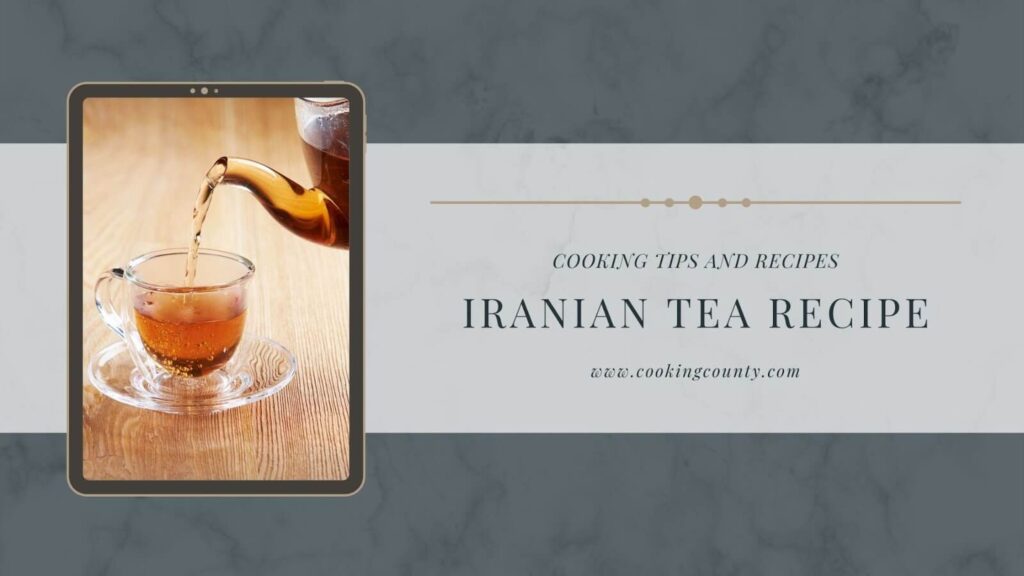
How to have a Better Brewed Black Tea?
Quality and freshwater: The water you use to brew tea should be fresh, clear, and good quality. Using water that has been boiled several times, as well as using mineral water, will not give you good tea. You can use well-purified water to brew tea.
Porcelain teapot: The best container for brewing Persian tea is a porcelain teapot and then glass. Brewing tea in a metal or plastic teapot does not give you quality tea.
Amount of tea used: We suggest one teaspoon of dry tea per cup, but this largely depends on your taste and the type of Persian tea you use. It is enough to brew tea several times in different amounts to reach your desired flavor.
How long it takes to brew tea: This also depends on your taste and type of tea. Usually, after 15 to 20 minutes of brewing, the raw and specific smell of tea disappears, and its color becomes darker.
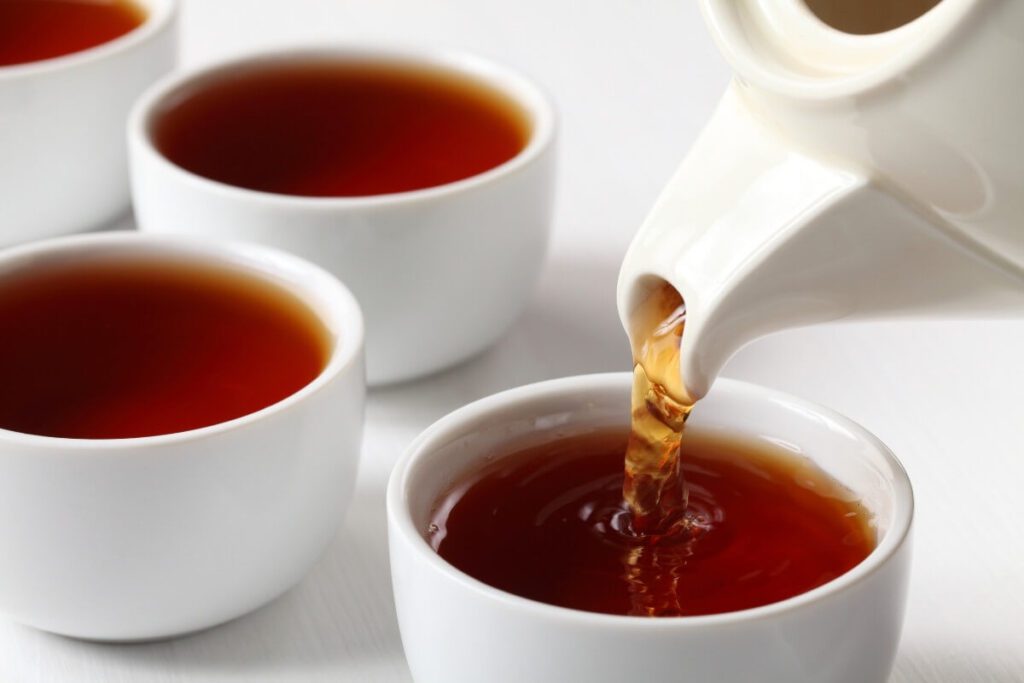
Directions: Brewing Iranian Black Tea
Here are the Persian tea ingredients:
Step One
Put the water on heat until it gets to the boiling temperature. Turn it off after the water boils and let it stand for 2-3 minutes until the temperature drops slightly.
Step Two
For each glass of water, pour a teaspoon of black tea into a porcelain teapot or glass and wash it with cold water. Washing tea will eventually make it more colorful. Then place the teapot without water on the kettle for 2-3 minutes to warm the tea.
Step Three
Add boiling water to the teapot and shake it so that the teas do not stay on the surface. Then place the teapot on the kettle for 15 minutes to brew well.
Step Four
After steeping tea, if you want to use it for more than 30 minutes, it is better to remove the tea waste from the teapot so that your tea does not become unclear. Finally, your delicious tea is ready, and you can enjoy its unique and pleasant aroma and taste.
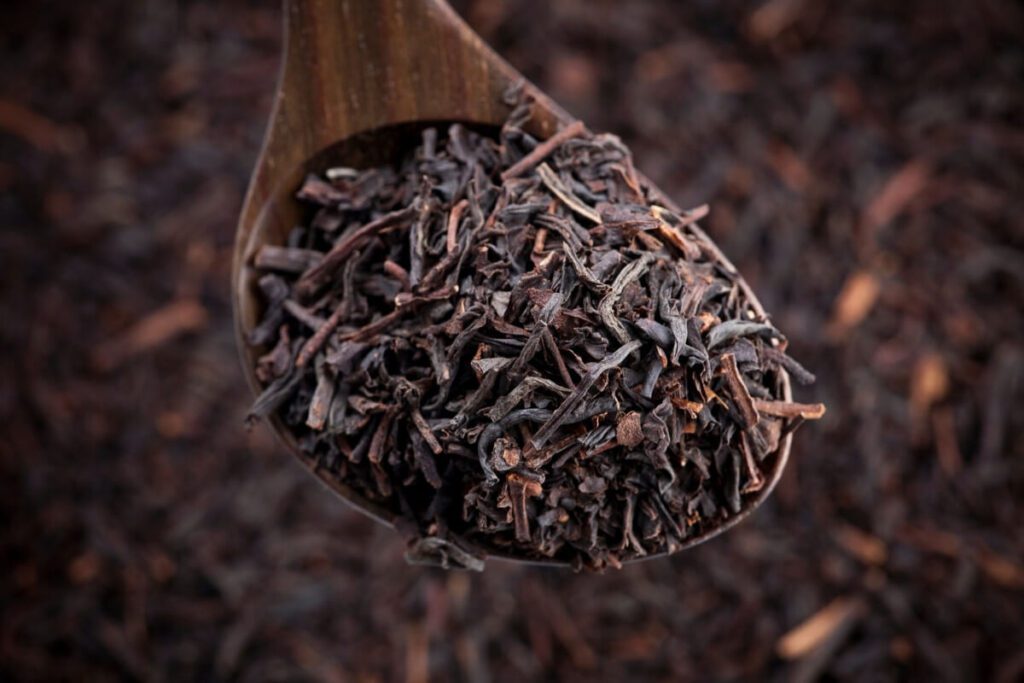
The Importance of Washing Iranian Tea Before Brewing
Before brewing Iranian tea, it is better to wash it once with cold water. This removes the dirt and dust from the tea. It will look clearer and brighter when your tea is brewed. Usually, the presence of these particles and dust in the tea can slightly tarnish the color of the tea.
Note that you should never wash the tea with boiling water because this causes the loss of the natural aroma and color of tea. Before pouring tea into the teapot, it is better first to pour a little boiling water into the teapot and drain it.
In this way, the teapot’s body gets hot, and your tea brews better and faster. Another interesting point about brewing Persian tea is that you pour the dry tea into the teapot until the water of the kettle boils without adding water. This will eliminate the moisture in the tea and improve the quality of your tea.
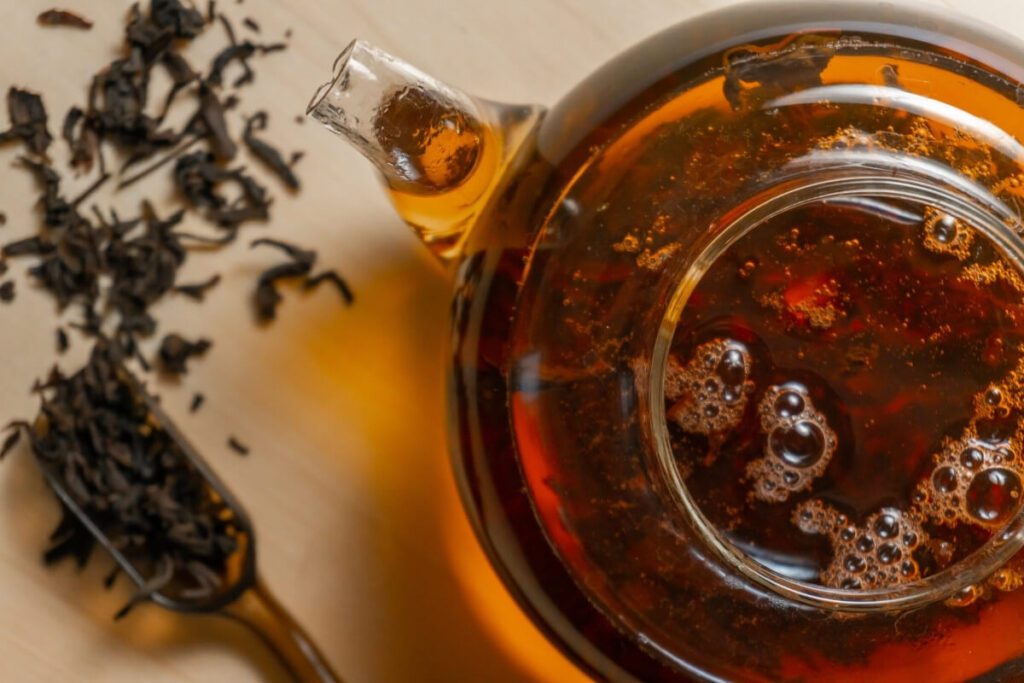
How Do We Know Our Tea is Ready?
The question is: How to brew Persian tea? Brewing Iranian tea is slightly different from others. As mentioned, Persian tea needs more time to brew. We need to put the tea in a suitable teapot and steam on the kettle for at least 20 minutes.
Keep in mind that tea is a herbal beverage and requires a certain amount of time to brew. If the tea brews and colors so fast, it signifies that the tea is impure. Usually, the finer the tea, the sooner it is brewed, and the greater the color and the more astringent the taste.
Usually, after 15 to 20 minutes of brewing, the raw and specific smell of tea disappears, and its color becomes darker. Non-brewed tea is still pale. And it doesn’t smell good. Another issue that increases the aroma of Persian tea, it is better to put a cloth or handle on the teapot.
The Difference Between the Taste of Iranian Tea and non-Iranian Tea
First of all, you should know that the original Iranian tea has no added colors and flavors. So it needs more time to brew. On the other hand, non-Iranians are usually flavored.
This is the reason why many people prefer flavored tea to Persian tea. But it is better to know that Iranian tea is more natural and healthier. On the other hand, the properties of Persian tea are not comparable to types of tea.
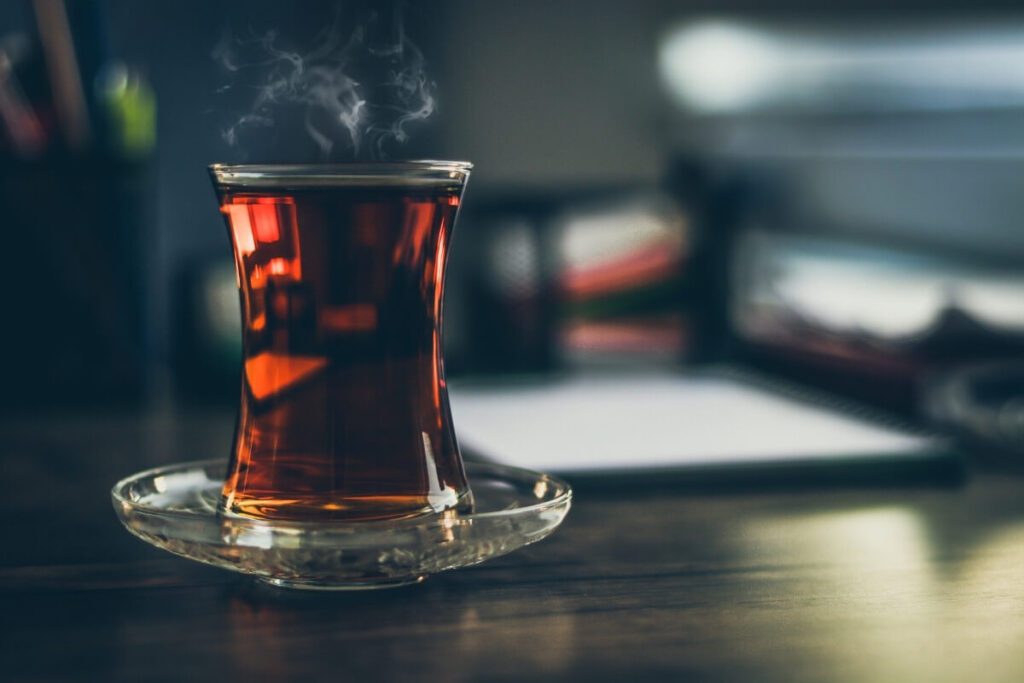
There are many delicious sweets that can be served with tea like Ghotab, Zoolbia, Poolaki, Persain Halva, and Nane-Berenji. Do not miss them!
If you made Persian tea using the mentioned points, do not forget to share your experience with us. If you also have any related questions about the Iranian tea recipe, please do not hesitate to ask.
FAQs on Iranian Black Tea Recipe
- What is black tea from Iran?
Cardamom, cinnamon, and saffron are just a few of the herbs and spices that are frequently used to boil tea, giving it a distinct and fragrant flavor. In addition, sugar cubes or rock candy are frequently offered with it, giving the tea a delightful and gratifying touch.
- What kind of tea is consumed in Iran?
It is known for its strong flavor and deep aroma and is mostly made from black tea leaves. Iranians routinely drink Persian tea, which is significant to Iranian culture. Persian tea is offered with warmth and a sense of community.
- What is the amount of caffeine in Persian black tea?
With just 47 milligrams of caffeine per eight ounces, it is the perfect picker upper. Packed with antioxidants, black tea is thought to help decrease cholesterol and improve cardiovascular health.
How to Flavor your Persian Tea?
So, Persian tea can be flavored, exactly as South Asian masala chai. Here are some suggestions for enhancing Persian tea’s flavor:
- Rose water or dried rose petals or buds
- orange peel, also known as orange blossom water
- Saffron
- cardamom, cinnamon
The aforementioned components give your Persian tea a lovely, delicate flavor and scent. While the tea is boiling, add them to the teapot with the tea leaves and let them infuse the tea. Use one or two complementing components at a time, though, as opposed to using all of them at once.
How to Serve Persian Tea
Persian tea is usually served with a sweet side dish. That might be the more commonplace cakes and sweets or the traditional dates.
Provide ordinary sugar or sugar cubes on the side so people can add sweetness to their tea if they so want. Or get your hands on some saffron sugar sticks and wow them.
That’s all there is to it when it comes to making Persian tea at home.
Health Benefits of Black Tea
Due to its numerous health advantages, tea has become a popular staple beverage in Iran. For example, five servings of veggies have the same amount of antioxidants as only two cups of black tea.
Drinking three cups of tea a day can help lower the risk of heart attacks and strokes because it also inhibits the formation of blood clots in major arteries. Tea’s unique taste adds to its everyday delight in addition to its health benefits.
While black tea originated in China and India, Iranian tea is considered to be of the greatest caliber worldwide. Northern Iran’s perfect environment makes it a great place to grow tea, leading to some of the cleanest and most natural tea brands in the Persian and global markets.
Types of Persian Tea
Though everyone has a distinct preference for flavor, Ahmad, Twinings Earl Grey Tea, Mahmood Tea, Naderi Tea, Debsh Tea, and Ferdows Tea are the top 5 Persian tea brands among Iranians, in that order.
Iranian tea, colloquially known as “chai” in Farsi, is mostly made with black tea, the flavor and scent of which vary according to the tea’s provenance, method of preparation, and additions. Various Iranian tea varieties based on area, customs, and ingredients are listed below:
By Area:
- One of the most well-known tea varieties in Iran is Lahijan tea, which is grown in the Gilan Province.
- Another tea type from the Gilan Province, rasht tea is prized for its strong taste.
By Getting Ready:
- The most popular kind is loose leaf chai, which is often made in a samovar and steeped for a long time.
- Though more convenient, bagged chai is usually thought to be of lower quality than loose-leaf tea.
Through Flavoring Agents:
- Tea infused with saffron threads for fragrance and a deep, golden hue is known as saffron tea (Zafran Chai).
- Cardamom-flavored black tea, or “Hel Chai,” is frequently sipped on holidays and other special occasions.
- Cinnamon Tea: Black tea enhanced with the warmth of cinnamon powder or sticks.
- Gol-e Mohammadi Chai, or Rose Petal Tea, is black tea brewed with either water or dried rose petals.
- Mint tea is often made by combining dried or fresh mint leaves with black tea.
Iranian Tea Recipe; Tips for Making Persian Tea you Must not Miss
Course: DrinksCuisine: Persian foodDifficulty: Easy5
minutes15
minutes2
kcalAmong all the teas in the world, Iranian tea is one of the best, healthiest, and highest quality teas; One of the reasons is that in the production of most foreign teas, various chemical additives are used to increase the color, aroma, and taste of tea.
Ingredients
Water as needed
Black tea as needed
Directions
- Put the water on heat until it gets to the boiling temperature. Turn it off after the water boils and let it stand for 2-3 minutes until the temperature drops slightly.
- For each glass of water, pour a teaspoon of black tea into a porcelain teapot or glass and wash it with cold water. Washing tea will eventually make it more colorful. Then place the teapot without water on the kettle for 2-3 minutes to warm the tea.
- Add boiling water to the teapot and shake it so that the teas do not stay on the surface. Then place the teapot on the kettle for 15 minutes to brew well.
- After steeping tea, if you want to use it for more than 30 minutes, it is better to remove the tea waste from the teapot so that your tea does not become unclear. Finally, your delicious tea is ready, and you can enjoy its unique and pleasant aroma and taste.
Recipe Video


